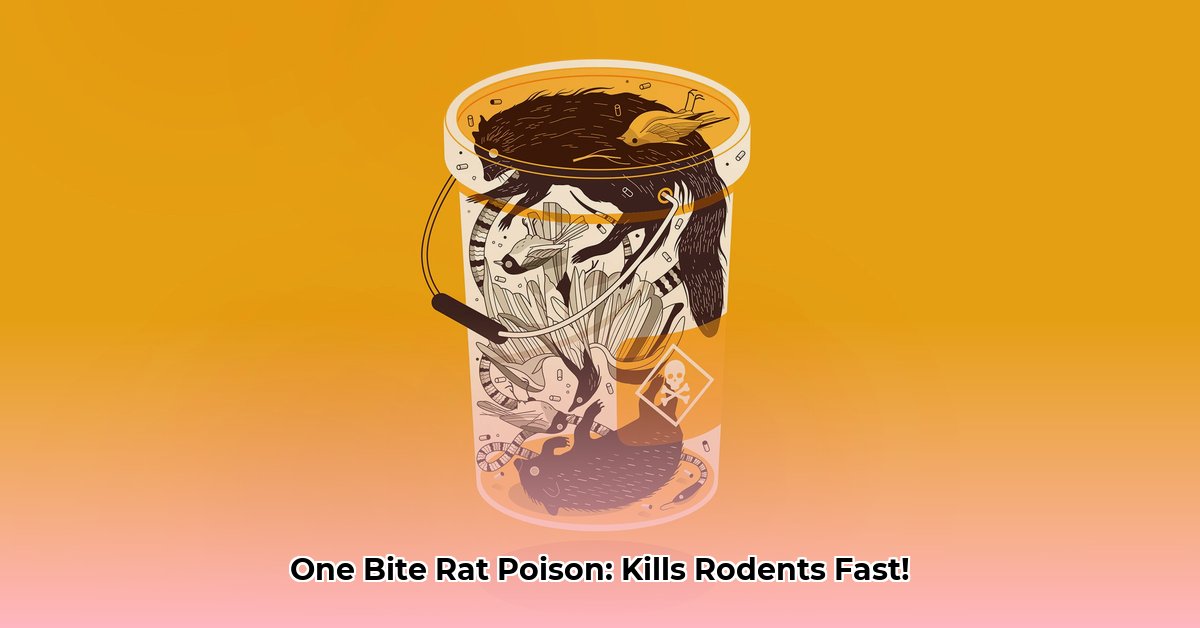
Spotting the Sneaky Critters: Identifying a Rodent Problem
Before tackling a rodent infestation, you need to confirm its presence. Look for telltale signs: droppings (small, dark pellets), gnaw marks on wood, food packaging, or wiring, burrows or runways, and the rodents themselves. The more evidence, the more significant the infestation. Focus on areas where food is stored or shelter is available (e.g., sheds, barns, debris piles). Early detection is essential for effective management. How quickly can you typically identify a significant rodent infestation?
The Gentle Approach: Non-Chemical Rodent Control
Prioritize non-chemical methods; they're often safer and more environmentally friendly. Prevention is key! Maintain impeccable sanitation. Store food in airtight containers, promptly clean spills, and regularly sweep and vacuum, especially in food preparation and storage areas. Seal entry points—cracks and holes—using caulk or steel wool.
Trapping offers a humane alternative. Snap traps are effective, but live traps allow you to relocate rodents. Place traps along runways or near observed activity, using appealing bait. Experiment with different baits to maximize effectiveness. Remember to check traps daily. What percentage of rodent infestations can be successfully controlled using only non-chemical methods?
When Poison Becomes a Last Resort: Responsible Rodenticide Use
If non-chemical methods fail and a significant infestation threatens your crop or property, rodenticides like "One Bite" from Tractor Supply might be necessary. However, always treat rodenticides as a last resort due to potential risks to the environment and non-target species.
Choosing the Right Rodenticide: Making an Informed Decision
Carefully read the label to understand the active ingredient, target species, and application instructions. Different rodenticides vary in toxicity and effectiveness. Some are designed for indoor, others for outdoor use. Prioritize products minimizing harm to non-target species. Anticoagulant rodenticides, which prevent blood clotting, are often considered less harmful to non-target animals, though further research is needed. Consult a local agricultural extension agent for advice. What are the key factors to consider when selecting a rodenticide for agricultural use?
Safe Application Techniques: Minimizing Risks
Follow these steps precisely:
- Strategic Placement: Place bait stations in areas of high rodent activity, but inaccessible to children, pets, and livestock. Secure bait stations to prevent accidental access. Consider tamper-resistant bait stations for added safety.
- Proper Storage: Store unused rodenticide in a locked, secure location, away from food, children, and pets. Always adhere to label instructions.
- Disposal: Dispose of used bait stations and leftover rodenticide according to local and state regulations. Many communities offer hazardous waste disposal facilities. Never discard them in the regular trash.
Monitoring and Evaluation: Tracking Progress and Adapting Your Strategy
Monitor bait stations frequently. Replace consumed bait. If rodent activity persists or increases, adjust your strategy. This may involve switching rodenticides, employing additional control methods, or seeking professional pest control. Maintain detailed records to track effectiveness. How often should you check bait stations when using rodenticides?
Environmental Impact and Responsible Disposal: Protecting Our World
Rodenticides can negatively impact the environment. Minimize harm through careful planning and responsible disposal. Always follow label instructions and local regulations. Consider the effects on soil and water quality, as well as risks to non-target wildlife. What are the long-term environmental impacts of improper rodenticide disposal?
Building a Sustainable Future: Integrated Pest Management (IPM)
Responsible rodent control is integral to sustainable agriculture. IPM integrates multiple strategies, prioritizing prevention and less harmful methods before resorting to chemical controls. Combining sanitation, trapping, and responsible rodenticide use (only when necessary) manages rodent populations while preserving the environment. Sustainable agriculture necessitates a long-term perspective, balancing productivity and environmental stewardship. What are the key benefits of adopting an Integrated Pest Management approach to rodent control?
Key Takeaways:
- Responsible rodent control is vital for sustainable farming.
- Prioritize non-chemical methods like sanitation and trapping.
- Use rodenticides as a last resort, following all safety precautions.
- Proper disposal prevents environmental contamination.
- Integrated Pest Management (IPM) offers a holistic, environmentally conscious approach.